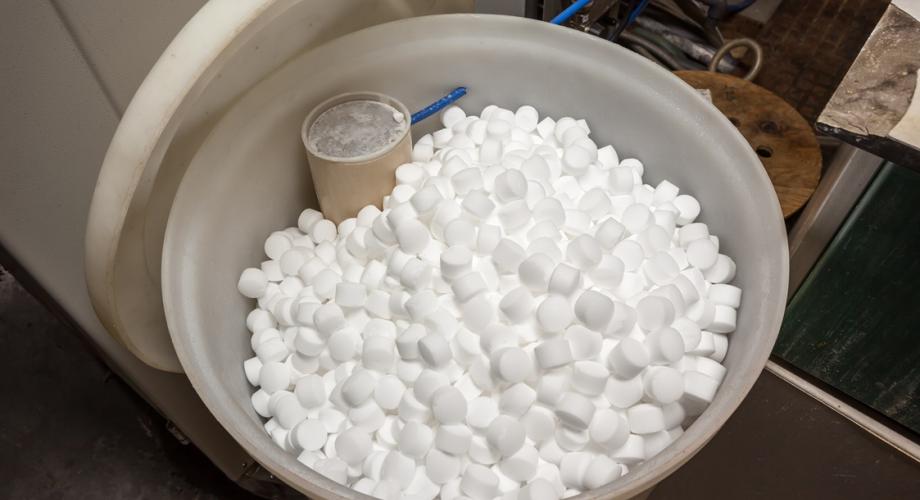Q: I have a 30-year-old flat roof on my apartment building and have been chasing leaks for the last few years. I’ve patched here and there, and my roof is not that bad. I’m dreading the tear off process, cost of a new roof and inconvenience to my residents. Should I just keep patching and hope for the best?
A: You are not alone. Many apartment building owners share your dread for exactly the same reasons including the liability associated with the tear off and installation process. We agree, chasing a mystery leak on a flat roof system is not fun especially in the rain!
We have literally saved hundreds of
existing roofs and thousands of dollars using “cool roof” elastomeric acrylic or siliconized roof coating systems. These systems are very easy to apply over existing roofing systems. Primarily, we use them over typical commercial rolled roofing systems, but it can be applied over countless materials due to its adhesive properties.
We recommend a visit with a qualified roofing specialist who can assess the existing roofing and determine if your roof condition qualifies for a roof coating versus a replacement. Most roofs will need to be patched in several areas of concern prior to the application of the coating to ensure a waterproof, structurally sound substrate.
The process is very simple:
- Power wash, degrease and allow the roof to dry.
- Patch and repair any problem areas. Apply elastomeric or manufacturer caulk to all seams, corners and other lap areas.
- Using a blower, blow off any residual dust and debris.
- Following the selected product specifications, apply the required primer to your newly prepped surface.
- Now you can brush, roll, squeegee, broom or spray on the elastomeric roof coating.
This system can be used for patching small areas or covering entire roofs. The acrylic based systems are less expensive than the siliconized systems, but we recommend the siliconized systems for long-term waterproofing.
Tip: Be sure to brush the material into every nook and cranny. Be generous with the material; however, do not apply thick coats or allow the material to pool. Use a minimum of two thin coats.
Q: I have a large brick patio with a number of flower containers on the brickwork. The gardener is not careful enough when he waters, resulting in some calcification of the bricks. I want to clean up the patio bricks and remove the calcium build-up with a solution that will not kill the grass surrounding the patio.
A: There are a number of methods to get rid of calcium build-up on your bricks. However, any product that will not harm the grass might not be strong enough to remove the build-up. A potential answer includes a solution of muriatic acid (pool acid) and water. This mixture will kill any grass it contacts, so work sparingly with a sponge or brush. Be careful as muriatic acid is strong and will etch the concrete and brickwork. Wear rubber gloves and eye protection. Mix a small amount of acid into a bucket of water, increasing the ratio of acid and water until the calcium starts to break down. Work on a small area with lots of rinsing water to dilute the cleaning solution. Sealing the bricks will help keep the calcium build-up from coming back.
Q: I have installed a water softener on my property. After a few months I checked the salt level and was astonished to find it did not go down as expected. As a matter of fact, the salt level has not gone down at all. I’m confused! Is my machine super-efficient or is something wrong? To make things worse, the water is not coming out soft as expected. What did I do wrong, and how do I solve this dilemma?
A: Water softeners are very particular about what kind of salt is used in them. We suspect that you may have used salt crystals as opposed to salt pellets. Salt crystals will look a little like shaved ice, and salt pellets will look like big, white horse pills. A salt system recharges itself by pumping water into the bottom of the salt tank and creating a salt brine. This process causes the salt to melt and replenish the softening properties of the machine. In a normal system using salt pellets, the salt melts at the bottom and causes the salt in the upper section of the tank to drop down and replace the melted salt until it is time to add more salt. When salt crystals are used, the melted salt creates a salt bridge to form, holding back the salt in the upper part of the tank. After a while, a salt void is created, and the softener is no longer recharging the system. Now the bad news. The salt crystals need to be removed and replaced with salt pellets. Now back to the really bad news: You will find the salt crystals have hardened to the consistency of concrete. Removing it may require a hammer and cold chisel or a small electric demolition hammer. Be careful not to punch a hole into the side of the water softener. Adding water to the tank will greatly help in breaking down the salt and aid in shoveling out the now loose salt.
Do you have DIY maintenance questions? Send them to [email protected].
